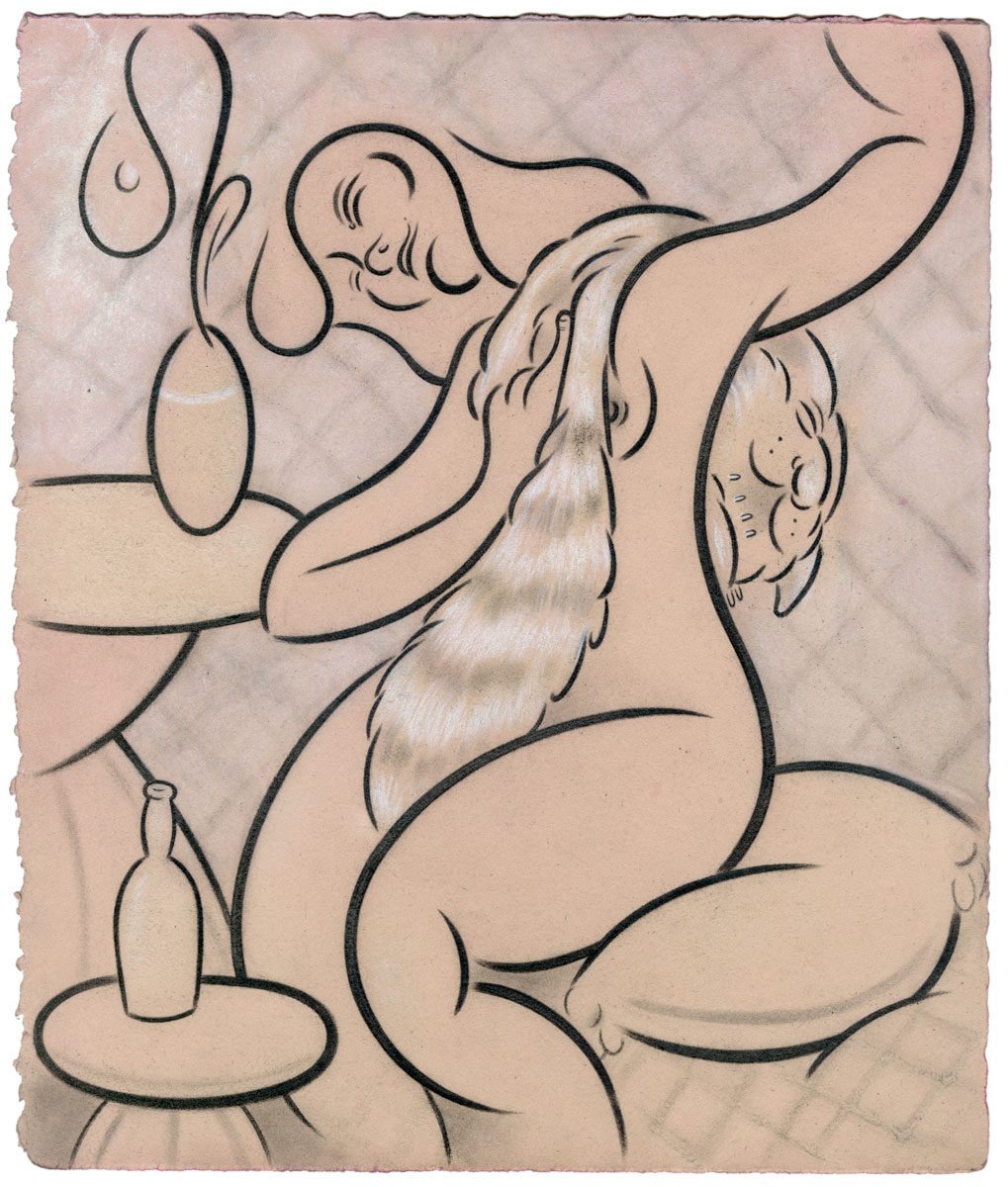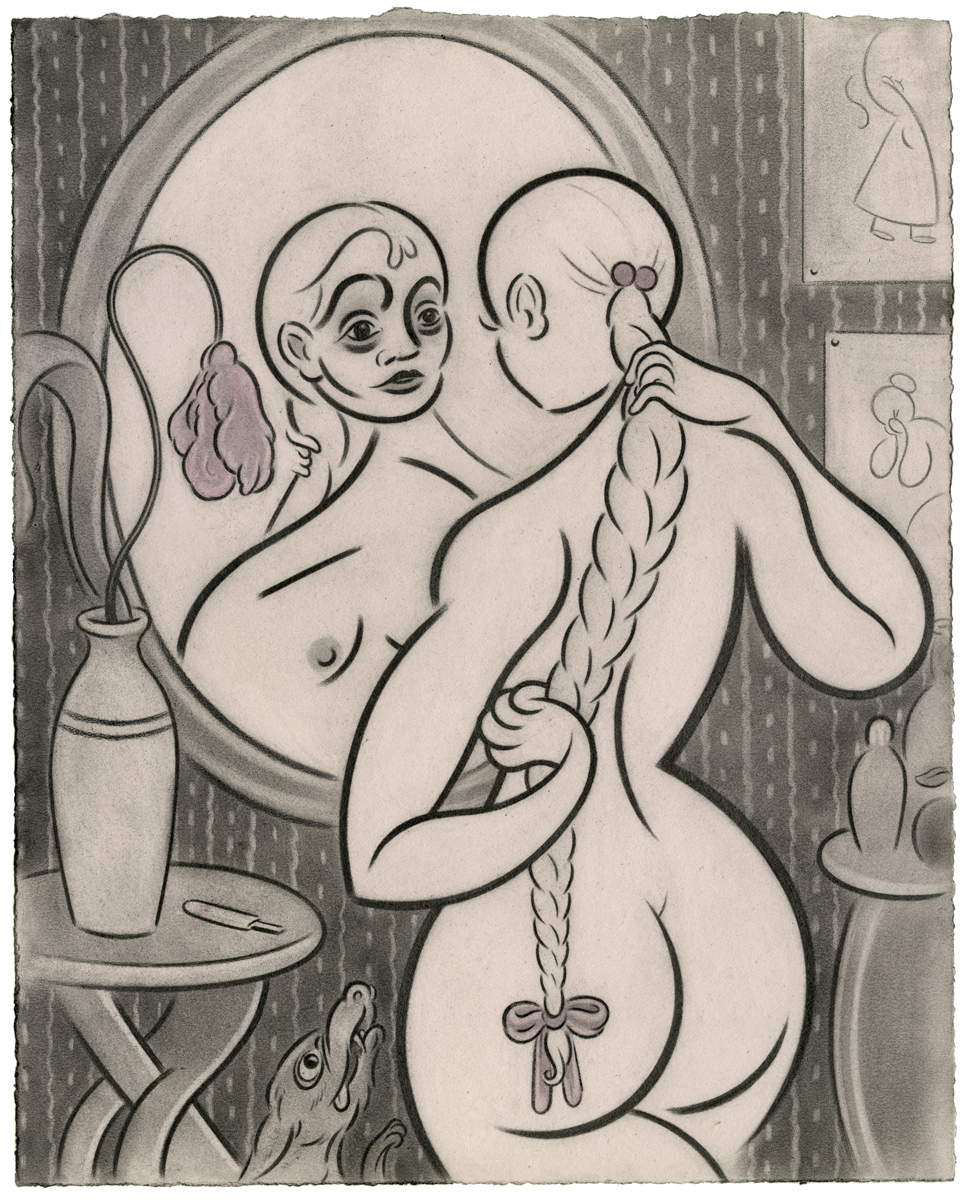
I first encountered Koak’s comic-inspired works on paper last fall in an exhibition called NSFW: The Female Gaze at New York’s Museum of Sex. Despite the warning of profanity implicit in the show’s title, her starkly penciled line drawings didn’t strike me as licentious—a naked woman bathing, nursing a baby, playing with a cat—but there was something undeniably sexy about them. Was it because I was looking at naked ladies and have been conditioned by the male gaze to perceive the female figure in repose as inherently arousing? I hoped not.
It was the curvilinear forms of the women, their backs arched and rounded; fingers, toes, nipples, lips, and vaginas all just slightly exaggerated; limbs at odd angles, that enticed me so. They certainly didn’t look like they were in ecstasy or even much at ease, sometimes they even looked sad. But they also seemed resolute, rooted, and in no real rush to untangle themselves despite their compositional confoundedness. What was turning me on wasn’t their bodies, per se, but their apparent comfortableness with being uncomfortable. It wasn’t that I wanted them, but instead I wanted to embody that sensation myself.

I am not the only person to have misconstrued my emotional desire with physical lust after looking at her drawings, according to Koak, when we spoke after I ran into her work again in January, this time in San Francisco, the city the thirty-six year-old artist calls home. “I’ve had people tell me that I make work about people having sex and I honestly don’t think I’ve ever made a work like that,” she says. Yet that’s what they see when they look at these intertwined bodies and exaggerated limbs. “Don’t get me wrong, I love erotic art. But I find it perplexing that people will look at a drawing of a nude woman and the main thing they see is a sex object. That probably has more to do with the way we view the female body than with the way I draw them.”
“For me nudity, no matter how prominent, is not linked to sex. It’s not enough for there to be nudity; it has to be linked with action or intent”
Instead, Koak views her work as sensual more than sexual, a distinction that is often lost in the media’s pornographic exploitation of the female form. “A knee can be a sexual part of the body, depending on how it’s used or how it’s touched. And just as easily, breasts, and nipples, and vaginas can be sources of pain or sickness or shame, or have all manner of non-sexual identities,” she explains. “So for me nudity, no matter how prominent, is not linked to sex. It’s not enough for there to be nudity; it has to be linked with action or intent.”
- My Tiger
- Midnight
In her drawings of nude women, she says she’s attempting to amplify being in the moment, noting that this sense of female presentness is stupefyingly lacking in historical depictions of women by male artists. Instead, they have long revolved around the pleasurable act of looking at the female figure, rather than being part of their reality as depicted in the scene. I mused on the most memorable moments of presentness I have experienced, or potentially will one day. The moments when the physicality of my own body will supercede the chitter chatter in my brain: orgasms, childbirth, pain and sickness, death. I couldn’t think of a single historical painting or drawing of a woman in such states off the top of my head, but all of these themes come out to play in Koak’s drawings.
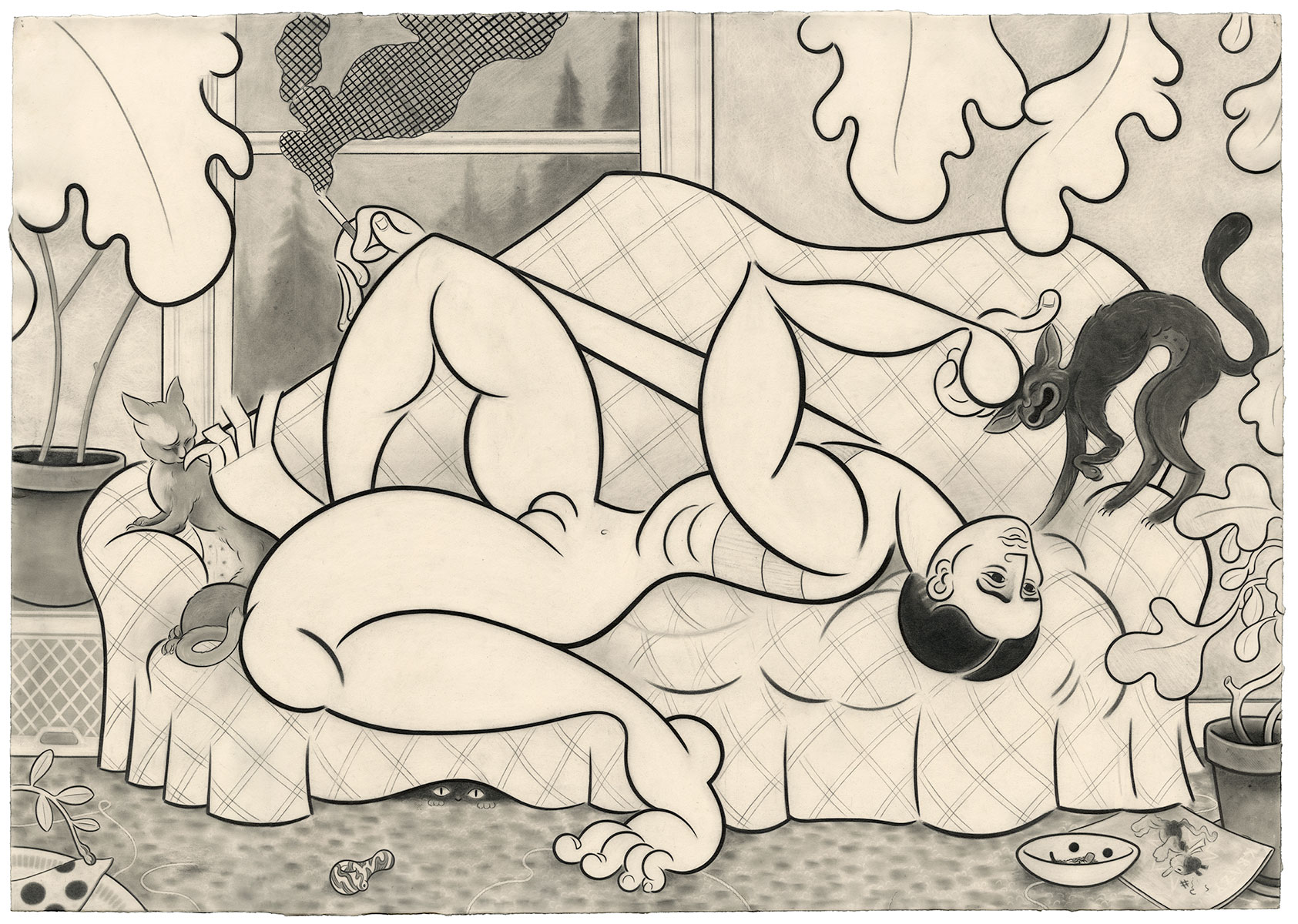
Which, I tell her, is the reason I found her women so fascinating. Their limbs are splayed or upturned or bent in unnatural ways. They express a hyper-present moment by suggesting there’s a confluence of planes of existence, one that doesn’t allow for a simple, holistic representation of a person. She agrees. “As much as I am trying to create moments that feel awkward or uncomfortable in my work, it’s more often a moment of recognition of just being alive. It’s the moments [where] we are fully present in our bodies,” she says. “But there is something to the moments in which we are fully present in our body where we are also, at the same time, the most outside of ourselves.”
“It sucks always being compared to really creepy old dead guys with that kind of reputation. I don’t want to make work that’s a part of that legacy, I want to make work that’s empowering for women!”
Koak knows a thing or two about the dislocating power of pleasure and pain, having started sketching these women as part of an autobiographical comic book project chronicling her own experience of Pelvic Inflammatory Disease—a condition that affects millions of women, causing intense pain, discomfort, and sometimes infertility—throughout her twenties. “You know when you watch cartoons and there’s that moment where someone gets hit on the head? The physical response is always the most intense that it could be. Their head immediately swells up to the size of grapefruit or something. That’s the kind of feeling I was trying to express,” she says.
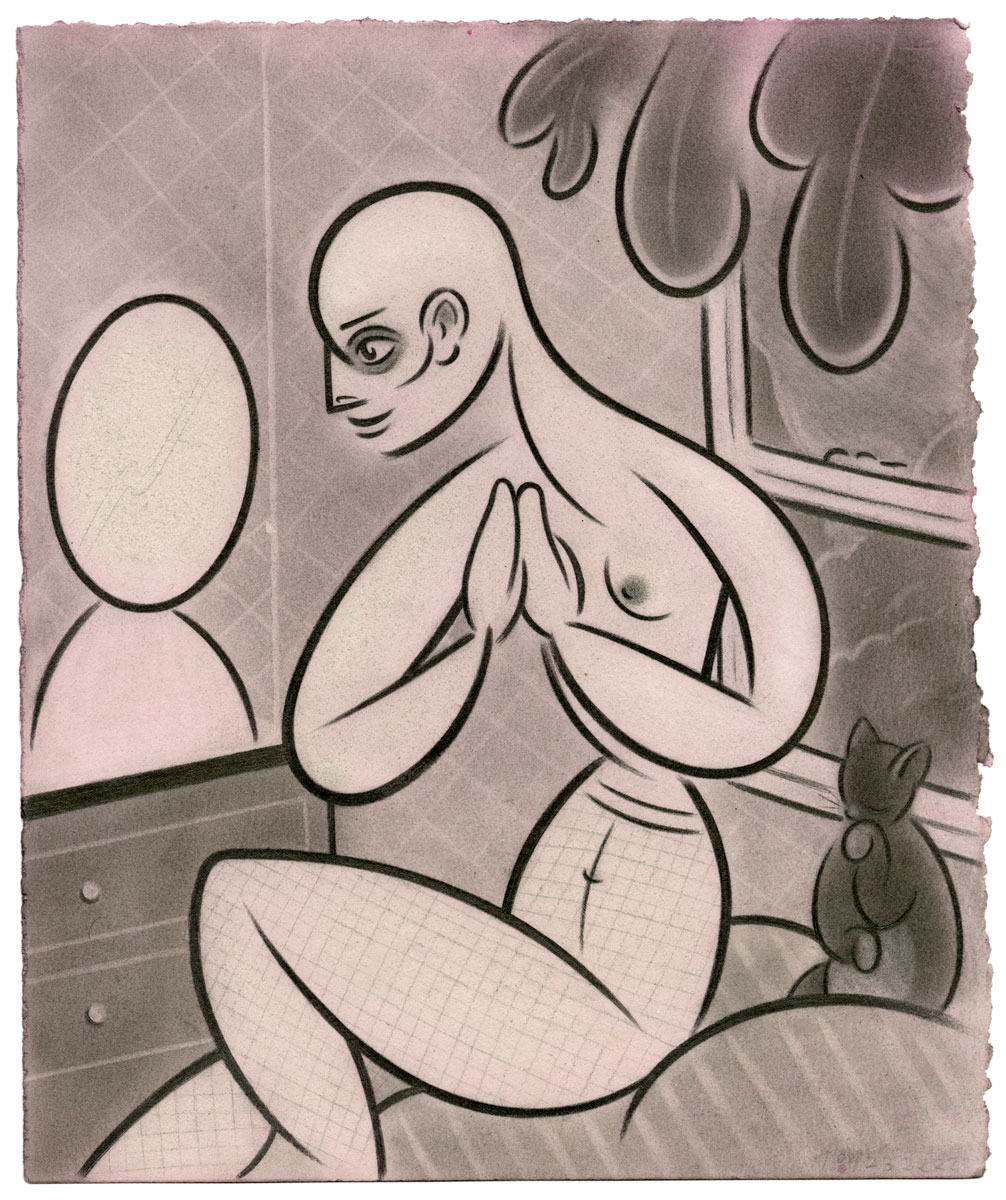
Her interest in cartoons makes a lot of sense since her artistic training was in comics at the California College of Arts. The angular faces and discombobulated limbs of her ladies indeed look darkly comical, but they also draw associations of cubism; reportedly someone once said her work was a blend of Popeye and Picasso. “I don’t really feel that influenced by him,” she notes, when I ask if the inimitable painter-and-philanderer influenced her style. “It sucks always being compared to really creepy old dead guys with that kind of reputation. I don’t want to make work that’s a part of that legacy, I want to make work that’s empowering for women!”
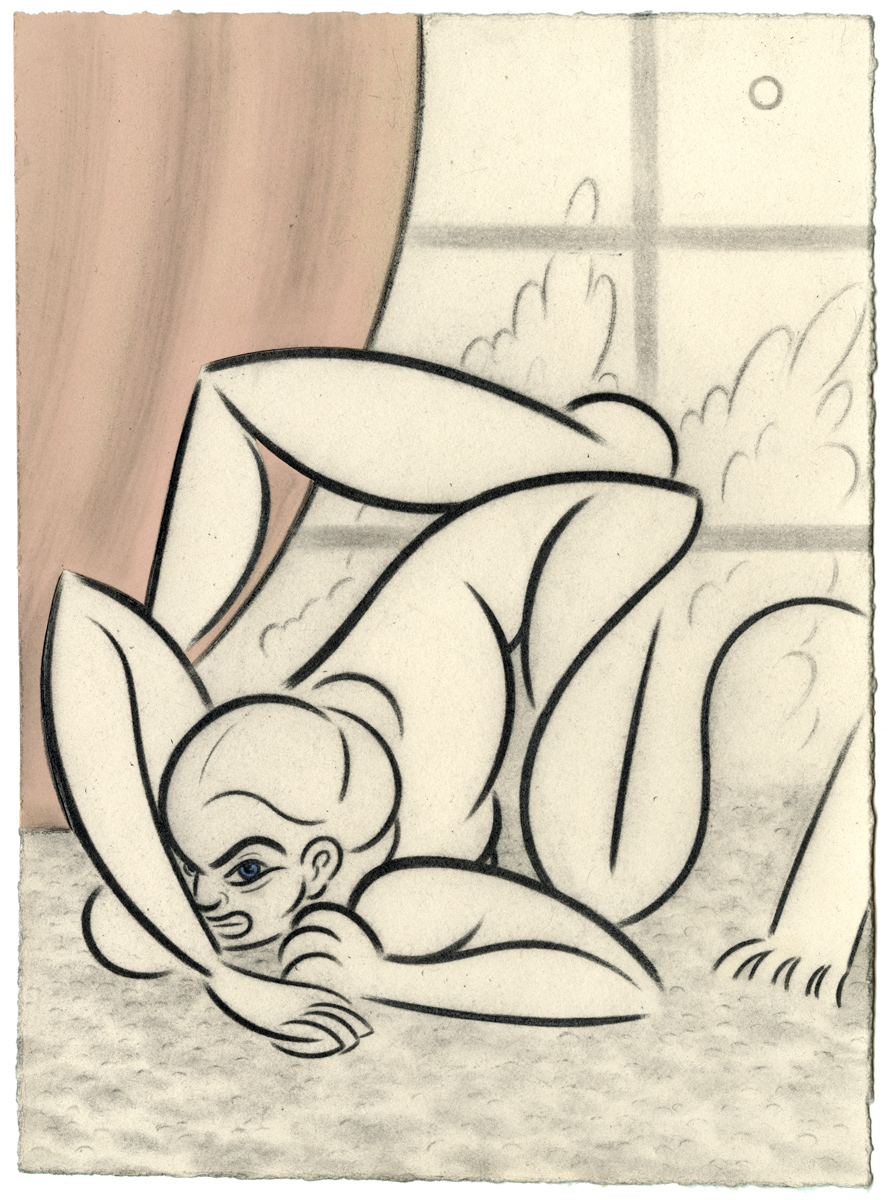
Perhaps the most empowering part of Koak’s oeuvre is the everyday, rather than fetishized femininity that she presents, which ranges from depictions of women doing house chores to rearing children; lounging masturbatorially on couches to comforting and cuddling partners. “When I was younger I had a very clear impression that, as a woman you were either a mother or wife, or, essentially, sexually up for grabs. You could not exist in a state of being both—or none—of those things.”
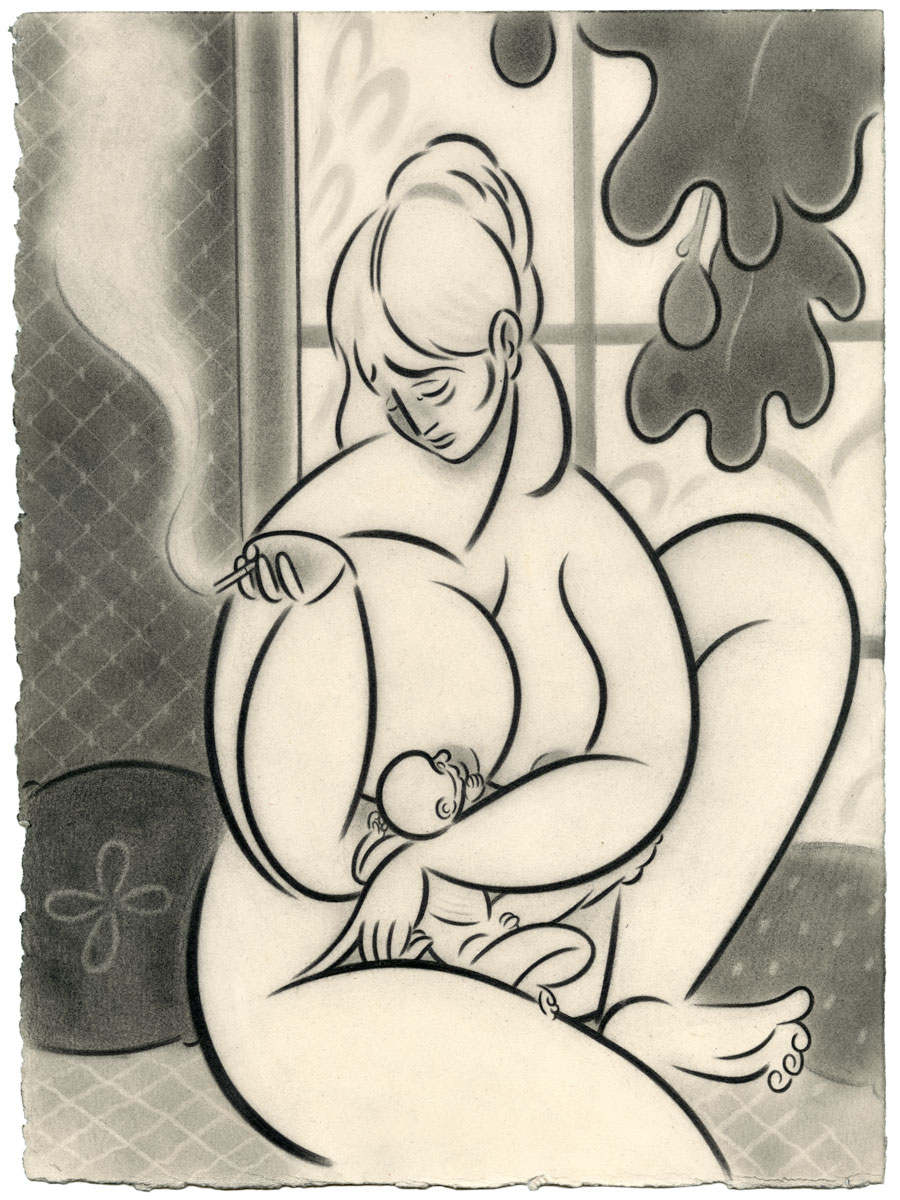
While her oeuvre has largely revolved around drawing, she’s now expanding to larger-scale painting as part of her new venture at San Francisco’s Minnesota Street Project, where she’s currently one of four Liquitex artists-in-residence, a medium that brings added historical weight to female experience that has been historically underserved. “This idea that a woman is either sexual or maternal is something that I’m actively trying to unravel right now,” Koak tells me. “I find that anything where we are trying to box something, or someone, into an easily categorized state, to be perplexingly off.” But her women, in their multiplanar existence, certainly can’t be boxed in.
